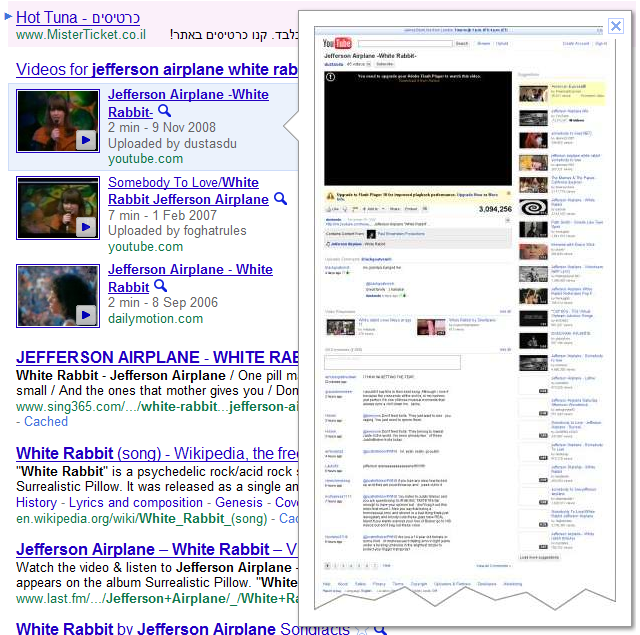Twitter API Rate Limiting
Reading http://dev.twitter.com/pages/rate-limiting, here are the major points:
REST API
-
Anonymous calls (things like users/show - get a user’s info) are limited to 150/hour, that’s 3,600/day. This limit is IP-based.
-
Authenticated calls (like a user’s home timeline) - 300/hour. Limit based on your app key.
Those rates are useful for a single-user app (something like TweetDeck), not useful for something like an app that crawls Twitter.
You can ask to be white-listed using this form: http://twitter.com/help/request_whitelisting.
If approved - you get 20,000 requests / hour. That’s more useful.
5 Tips to Make the Most out of UsabilityHub
UsabilityHub is a great tool to quickly test your application UI and flows before writing a single line of code. Here are some tips from my own experience using this tool:
1 Use variations
When you’re testing various versions of the same design - use the “add variation” feature on an existing test instead of creating a new test. This will ensure that users who did the previous version of the test will not do the next version of the test. You don’t want the same people testing different version of a design because they’re already familiar with your design and so may be biased.
…Any.Do
Yesterday I met with Omer Perchik who told me about his new startup Any.Do.
Honesty, I amazed with what he and his partner are doing. I am usually a critical person and I dismiss ideas very easily but I have to take my hat off for these guys. What is awesome about it is the combination of:
-
Great product idea
-
How smooth execution looks
-
Super solid business model
-
How crystal clear the vision is
…
Product Management: Micro Focus
In the previous post I talked about clearly defining a product and communicating the definition to the whole team.
Once you have your product definition in place, there are two things that you control that can increase your chances to succeed:
- Quality of the team
- How well the work is aligned with the goals
We’re into product management, so now I’ll talk about Micro Focus, which is making sure that the everyday work of the whole team is actually promoting the stated goal of the company.
…Product Management: Focus The Team
This is the first in a series of posts on product management.
Two Kinds of Focus
In a startup project, the ability to focus is an absolute prerequisite of success. There are two kinds of focus here, I’ll call them “Macro” and “Micro”. Macro Focus means what is it exactly that your team is going to build. Micro Focus is making sure that every action and task a team member does is focused correctly.
…Page Previews on Google.com

Ben Pieratt on Creative Work
Ben Pieratt writes about doing creative work in a letter to a friend:
Creation is entirely dependent on ownership.
Ownership not as a percentage of equity, but as a measure of your ability to change things for the better. To build and grow and fail and learn. This is no small thing. Creativity is the manifestation of lateral thinking, and without tangible results, it becomes stunted. We have to see the fruits of our labors, good or bad, or there’s no motivation to proceed, nothing to learn from to inform the next decision. States of approval and decisions-by-committee and constant compromises are third-party interruptions of an internal dialog that needs to come to its own conclusions.
…
Cyber Warfare Is for Real
The story behind the Stuxnet worm that infected computers in Iran is pretty fascinating. From the Wikipedia article:
The complexity of the software is very unusual for malware. The attack requires knowledge of industrial processes and an interest in attacking industrial infrastructure.[1][3] The number of used zero-day Windows exploits is also unusual, as zero-day Windows exploits are valued, and crackers do not normally waste the use of four different ones in the same worm.[6] Stuxnet is unusually large at half a megabyte in size,[20] and written in different programming languages (including C and C++) which is also irregular for malware.[1][3] It is digitally signed with two authentic certificates which were stolen[20] from two certification authorities (JMicron and Realtek) which helped it remain undetected for a relatively long period of time.[21] It also has the capability to upgrade via peer to peer, allowing it to be updated after the initial command and control server was disabled.[20][22] These capabilities would have required a team of people to program, as well as check that the malware would not crash the PLCs. Eric Byres, who has years of experience maintaining and troubleshooting Siemens systems, told Wired that writing the code would have taken many man-months, if not years.
…
Delver Blog
Over on the new Delver Blog:
In addition to chatting with your friend, you can share your browsing with them by clicking the “start sharing” link at the bottom of the chat room. This means that your friend will see what products, catalogs and profiles you’re browsing on Delver. You can use this to show your friends things you like and talk about them at the same time. It’s like going shopping together.
…
On the Connection between Age and Creativity
Jonah Lehrer on Old Writers and the connection between age and work in other areas of creativity:
For instance, Simonton has found that poets and physicists tend to produce their finest work in their late 20s, while geologists, biologists and novelists tend to peak much later, often not until they reach late middle age. Simonton argues that those disciplines with an “intricate, highly articulated body of domain knowledge,” such as physics, chess and poetry, tend to encourage youthful productivity. In contrast, fields that are more loosely defined, in which the basic concepts are ambiguous and unclear - examples include history, literary criticism and biology - lead to later peak productive ages.
…